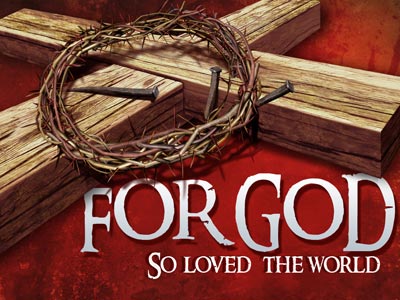-
The Scapegoat
Contributed by Philip Harrelson on Nov 28, 2017 (message contributor)
Summary: A message to be preached the week before Easter. It works with the type of the scapegoat in Leviticus.
The Scapegoat
Leviticus 16:21-22 KJV And Aaron shall lay both his hands upon the head of the live goat, and confess over him all the iniquities of the children of Israel, and all their transgressions in all their sins, putting them upon the head of the goat, and shall send him away by the hand of a fit man into the wilderness: [22] And the goat shall bear upon him all their iniquities unto a land not inhabited: and he shall let go the goat in the wilderness.
Hebrews 13:11-12 KJV For the bodies of those beasts, whose blood is brought into the sanctuary by the high priest for sin, are burned without the camp. [12] Wherefore Jesus also, that he might sanctify the people with his own blood, suffered without the gate.
I. INTRODUCTION -- WHY THE TYPES?
-The Bible is an incredible book. It is the Book of books. Far too often, especially in the past, I have fair misjudged the value of the Book. While many of us have more than one and we probably purchased some of them very cheaply, I am coming to understand that the Bible is worth more than all of the money in the world.
-This Book is so full of spiritual wealth that yet remains to be tapped into. I am more and more confident of the fact that the more I study the Word that the less I really understand and grasp it’s majesty, it’s power, it’s direction, and it’s intensity.
-I understand the basic concepts of the New Birth and a few other doctrines that are presented here but the fact remains that I will go to my grave having barely scratched the surface of the magnitude of God’s Word.
-One of the deeper ways to look at the Scripture is to gain insight into what is referred to as the “types.” The Greek word is TUPOS which means “to beat or to strike.”
-A type is an imperfect impression, image, resemblance, or representation of a person, thing, or event. The anti-type is more perfect and excellent in its kind, but comes after the type.
-One could understand that the Old Testament is a picture of many New Testament events, people, or things. This emphasizes to us the vast importance of diligently comparing the Old Testament to the New Testament.
-Looking at the types in this fashion does a number of things for us:
• It creates a powerful unity of the Scriptures.
• It aids in the interpretation of doctrine (i.e., The OT Tabernacle can help one see NT salvation.)
• It can help give a proper understanding of prophecy.
• It strengthens the fact that all the treasures of wisdom and knowledge are within the pages of the Bible.
A. An Example
Leviticus 2:13 KJV And every oblation of thy meat offering shalt thou season with salt; neither shalt thou suffer the salt of the covenant of thy God to be lacking from thy meat offering: with all thine offerings thou shalt offer salt.
-Salt in the Old Testament was important for the sacrifices but when we get to the New Testament salt becomes something more.
• It is a symbol of the purifying influence of the Spirit.
• It preserves us from the tainting of sin.
• It not only keeps us pure but helps us to become change agents in the world.
• Salt will stop the corrupting influence of sin.
-This is just a small example of how the types work. One could go even further with the materials and colors of the Tabernacle because all of the contents were significant of some greater truth.
II. THE SCAPEGOAT
-The Scripture setting that we read presents one of the most important types in the Bible. Leviticus 16 gives the instructions of what to do with the sacrifices on the Day of Atonement.
-Two goats were to be selected by the priests. One of the goats was to be killed and the blood was taken into the Tabernacle and sprinkled on the Mercy Seat. One goat was to be sacrificed for the sanctification and rolling back of Israel’s sins.
-The second goat was to be turned away into the wilderness. The priest would lay his hands on the head of the goat and all of the iniquities, transgressions, and sins of Israel were placed on this “sin-bearer.”
-At this point the goat would be taken to the wilderness at the “hand of a fit man” and he would be cast off into (as Scripture states) “a land not inhabited.”
Psalms 103:12 KJV As far as the east is from the west, so far hath he removed our transgressions from us.
-This goat was to go out, unprotected, into a wilderness of wild animals, little water, and very limited pastures. While goats do not have human emotion, this animal was bearing the sins of the nation would be subjected to:

 Sermon Central
Sermon Central



